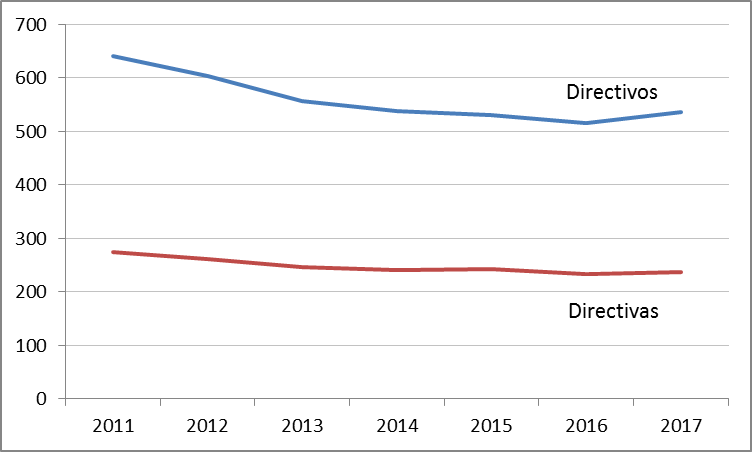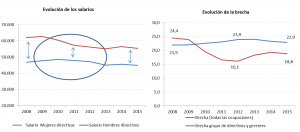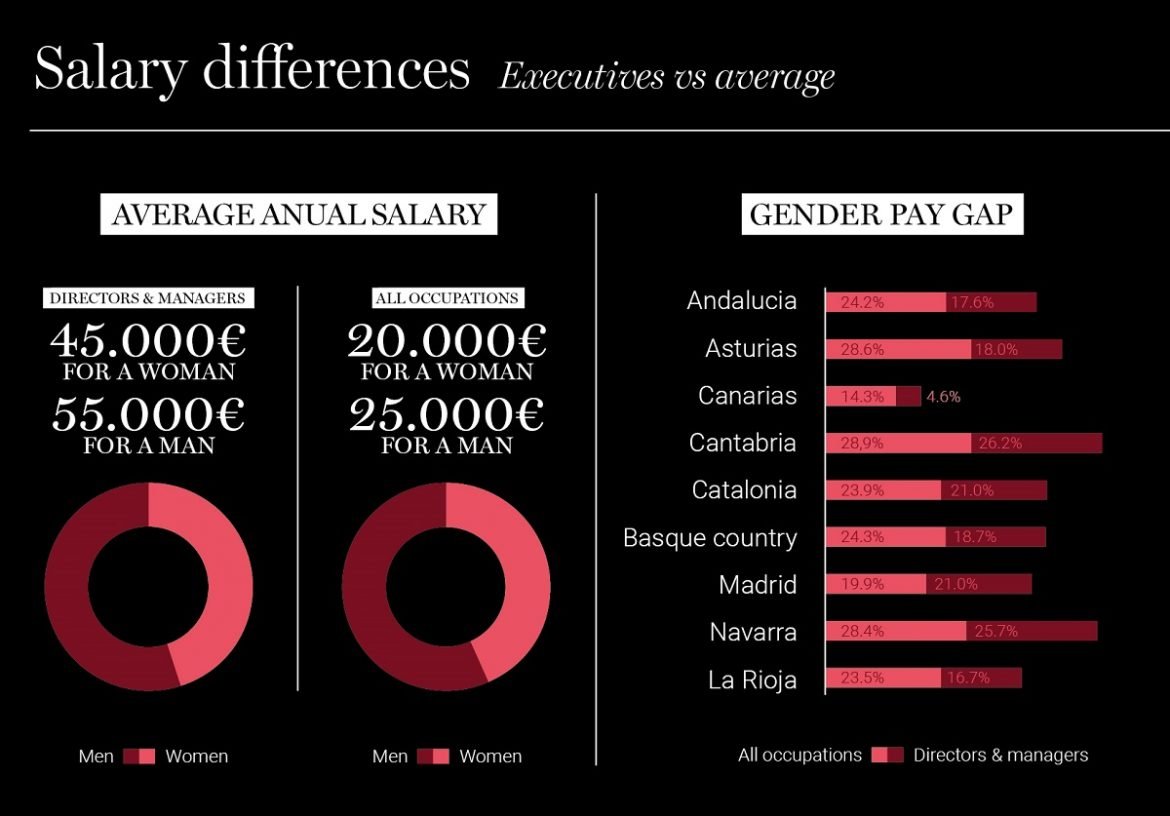In recent decades, women have experienced notable improvements in the employment market, especially in terms of activity and employment levels. However, pay equity, defined as “equal pay for work of equal value or equivalent” remains a pending challenge in all professional categories and also at managerial levels, where the presence of women is also still very low (only around 30% of management level positions are held by women.

According to the Annual Salary Structure Survey (ASSS), the average salary of women who held a management position in 2015 (most recent data) was around €45,000, compared to the €55,000 men who occupied in the same category received. That is, women in a managerial position were paid 18.8% less than men in the same position, which means the average annual salary for women represented 81.2% of men’s salaries. On a positive note, the salary gap in this occupational group, which is high, was still lower (4.1%) than the gap for the national avarage of all occupations, which stood at 22.9% that year.
The gap is greater in annual bonuses
Considering earning composition, the data seem to show that the main differences come from annual bonuses. Thus, in the Eurozone, the gap referred to this concept is higher than the one for salary, reaching 82.6% in larger companies (1000 employees or more). We can find an exception in medium-sized companies, where the gap in annual bonuses is lower, even negative (women received higher bonuses than men).
The analysis of Spain is limited due to the lack of data for larger companies. However, as far as the data show, the gap is also greater in annual bonuses than in salaries, especially in companies with between 50 and 249 employees, where it reaches 36.7% (10 percentage points more than the salary gap). Like in the Eurozone, medium-sized companies (250-499 employees) show lower compensation differences, and even lower bonus differences (table 2).
The salary gap between female and male managers decreased during the recession (5.2%)
In recent years, corresponding to the economic and financial crisis, the salary gap among the group of managers decreased by 5.2%. This data, however, should be qualified. And, given the evolution of the salary gap, that period has to be subdivided into two. In the first period, the most intense years of the recession (2008-2012), the gap was reduced (up to 8.3%, as opposed to an increase in the rest of occupations) as a result of a decrease in men’s compensation and a slight increase in women’s. In the second, when the economy started recovering (2013-2015), the gap increased again due to a salary evolution in the opposite direction: men’s salaries increased while women’s decreased (graph 2).
Thus men’s salaries behaved in a pro-cyclical way (they evolved similarly to the economic cycle): they were more sensitive to the economic recession but also to the recovery, probably via a decrease/increase of annual bonuses given that it is there where there are the biggest differences. Women’s salaries, however, behaved in a countercyclical way. Given this trend, it is very likely that data from subsequent years, once published by the INE, show an increase in the gap in this occupational group.

Font: INE, Enquesta d’estructura salarial.
Catalonia is the fourth autonomous region with the highest salary gap
The data by autonomous region doesn’t allow a very refined analysis since the ASSS only divides occupational categories into three large groups (”High”, “Medium” and “Low”). However, it is interesting to note that the salary gap in the “High” occupational category, where managers should be grouped, shows that there are notable differences between autonomous regions. The salary gap in the Canary Islands was just 4.6%, compared to 26.2% in Cantabria. However, in general terms, the gap in this professional category is usually lower than the average of all occupations for each region and, with few exceptions, has been reduced or kept the same in recent years.
In relation to Catalonia, it should be noted that it is the fourth autonomous region with the highest salary gap at the “high” occupational level (21% in 2015). At the beginning of the recession this gap was somewhat greater (21.6%), although it ranked sixth. Thus, although the gap in this region has been reduced throughout the recession, as has the average salary gap for all occupations, it has done so in a smaller proportion than in other regions, which means that it now ranks higher.



















